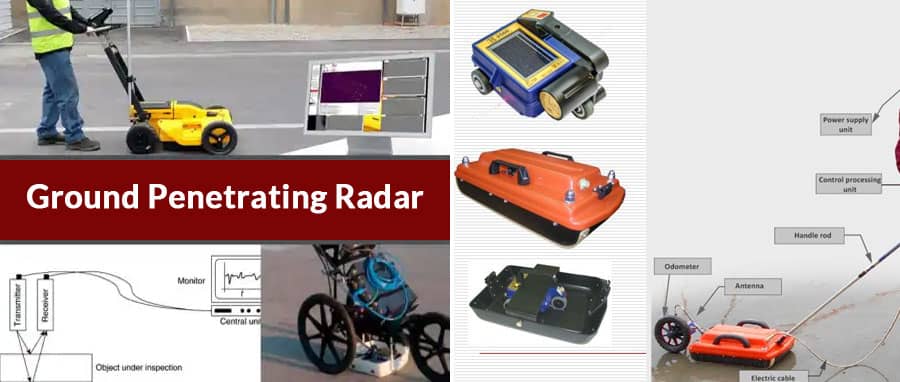Using Ground Penetrating Radar in Construction

A Ground-penetrating radar (GPR) is a non-dangerous procedure utilized for examining the qualities of the subsurface. It is an ongoing NDT instrument that utilizes high-recurrence radio waves to examine the underground surface. This procedure gives high-goals information inside a brief period.
GPR utilizes electromagnetic waves to picture the subsurface. GPR is a geophysical survey strategy that can survey solid, brick work, black-top, and ground. The article clarifies the working and use of GPR in the development business.
GPR Data Collection for Ground
GPR can be utilized to break down the area and profundity of any article underground. Underground examination can be directed utilizing different kinds of GPR gear. The profundity and the size of the objective choose the sort of GPR instrument required.
In this procedure, the GPR produces and gets a sign at a pace of a thousand times each second. The field administrator investigations this promptly and stores it in the framework. It is later taken for additional information investigation.
Highlights of Ground Penetrating Radar (GPR)
- GPR can be utilized for identifying and recognizing metallic and non-metallic materials.
- GPR works best when utilized in a medium that reflects high variety in electromagnetic properties. Metallic materials like steel fortification in concrete is one such right application.
- Enormous variety between the electromagnetic properties of the objective material (for instance, rebar) and the encompassing material (For instance, solid) makes GPR give the best outcomes.
- The significant objective materials identified by GPR incorporate solid, air-pockets or voids, metal, plastics, topographical highlights, variety in ground layers, exhumed zones, ground aggravations, and refilled territories.
- GPR is certainly not a decent decision in grounds with water stopped up or clayey soils, as these mediums are frail in signal making. It can't likewise enter through metallic surfaces or thick fortification in concrete.
Penetration Depth of GPR
The depth up to which GPR can enter is reliant on:
- Medium to Scan
- Transmitted Wave Frequency (recurrence of the reception apparatus)
- Emanated Power
The penetration depth diminishes when the electrical conductivity of the medium is high. This is a direct result of the high constriction of the waves.
High recurrence gives high-goals results however lower penetration depth. Lower recurrence gives extraordinary profundity with low goals. Subsequently, the decision of recurrence is reliant on the destinations and the profundity of the survey way. Continuously test more than one recurrence and fix a last one.
For high-range applications like rebar or conductor areas, a high recurrence of 1000 MHz can be utilized, which gives a penetration profundity of 24 inches. For utilizing GPR in soils, a lower recurrence of 12.5 to 500MHz gives a more profound penetration.
Working Principle of Ground Penetrating Radar (GPR)
The GPR framework comprises a transmitter, receiving wire, and radargram (control unit). The transmitter produces beats of electromagnetic radiation into the surface to be surveyed. The distinction in permittivity means that the adjustment in sub-surface highlights.
A portion of the electromagnetic vitality reflects when any change is experienced. The reception apparatus gets these reflected waves, and the comparing varieties are recorded. The data is deciphered and shown on the radargram. The time taken by the reflected signs to go back is estimated, which means that the profundity and area of interference.
Ground-penetrating radar (GPR) working guideline
The GPR waves infiltrate through various soil trash, water, concrete, and various materials that have distinctive dielectric and conductive properties. These distinctions are seen in the GPR waves dependent on which the GPR information is deciphered.
The information pictures are at long last shown on the screen, which requires an accomplished GPR administrator to precisely decide the outcomes.
Information Collection in Ground Penetrating Radar (GPR)
The information assortment systems in cement and ground are clarified beneath:
GPR is utilized in cement to decide the area of support bars, courses, or post-tensioned links present in the solid component. This is directed by utilizing a high-recurrence GPR framework.
The GPR can be led in straightforward line filters, which decides the thickness of cement. To decide a particular objective inside the solid, the output can be acted in matrix positions. The outcomes are gotten for various pieces of the solid as pictures. These are consolidated to get a last 3D guide of the image.
For More Information Please watch the video tuotorial
